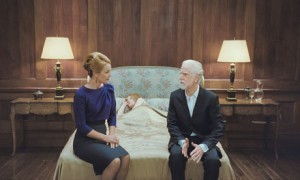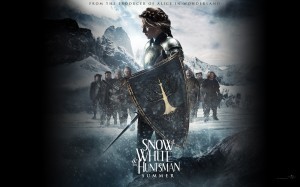Maria Tatar's Blog, page 27
January 7, 2012
Grimm Legacies: February 3/4
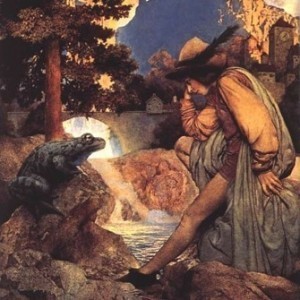 Here's the latest on the Grimm Legacies Symposium at Harvard University on February 3/4.
Here's the latest on the Grimm Legacies Symposium at Harvard University on February 3/4.
http://web.me.com/folkmyth/Folk_%26_Myth…
Friday, February 3rd:
4:00 – 5:00 pm – Heidi Heiner of Sur La Lune: Workshop
6:00 – 7:30 pm – Jack Zipes, Keynote Speaker
"Two Hundred Years after Once Upon a Time: The Legacy of the
Brothers Grimm and their Tales in Germany"
Saturday, February 4th:
9:00 – 9:30 am – Welcome: Maria Tatar
9:30 – 11:15 am – INTO THE WOODS
Cara Zimmerman
"Henry Darger, Adolf Wolfli, and Tales of Violence in Outsider Art"
David Rice
"When the Forest Becomes the Woods: The Horror Effect in the Grimms; Hansel and Gretel and Beyond"
Megan Leroy
"Domestic Adaptations: Anne Sexton's Transformations and the Grimms' Tales"
Katie Orenstein
11:30 – 1:00 pm – UNDER THE KNIFE
Valerie Gribben
"Medicine and Märchen"
Ariane Mandell
"Empowered by Tears: Weeping in Grimm's Fairy Tales"
Perri Klass
"Grimm and the Experts: Psychiatrists, Pediatricians, and Pundits"
1:00 – 1:45 pm – Lunch
1:45 – 2:15 pm – Presentation
2:15 – 3:45 pm – AMONG THE BEASTS
Ruth Lingford
David Elmer
"The Metamorphosis of a Folktale: 'Beauty and the Beast' in Apuleius' Metamorphoses."
Jerry Griswold
"The Many Conclusions of 'Beauty and the Beast'"
4:00 – 5:45 pm – THROUGH THE MAGIC MIRROR
John Cech
"The Grimms, Sendak, and the Zeitgeist"
Michael Hearn
"Increasing the Happiness of Children: George Cruikshank Illustrates the Brothers Grimm"
Kate Bernheimer
"The Grimm Art of Fairy-Tale Editorship"
Claudia Schwabe
"Between Socialism and Snow White: GDR Fairy Tales"
5:45 – 6:30 pm – Wrap Up
December 16, 2011
And now for the boys
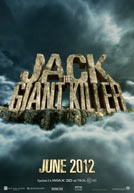
http://trailers.apple.com/trailers/wb/ja…
From the makers of X-Men (yes, you heard it right) comes Jack the Giant Killer. Thanks to the wonderful Jessica Fox for sending me the link to the trailer.
Jack the Giant Killer" tells the story of an ancient war that is reignited when a young farmhand unwittinglyopens a gateway between our world and a fearsome race of giants. Unleashed on the Earth for the first time in centuries, the giants strive to reclaim the land they once lost, forcing the young man, Jack, into the battle of his life to stop them. Fighting for a kingdom, its people, and the love of a brave princess, he comes face to face with the unstoppable warriors he thought only existed in legend–and gets the chance to become a legend himself.
December 10, 2011
Cinderella's Sisters and Footbinding
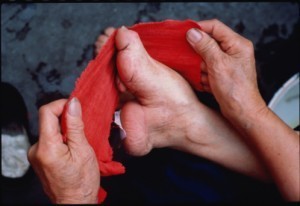 Dorothy Ko's Cinderella's Sisters: A Revisionist History of Footbinding has been the standard work on the ancient practice for several years now. Ko's premise is that footbinding was "an embodied experience, a reality to a select group of women from the twelfth to the twentieth centuries." Instead of denouncing it, she aims to understand "the powerful forces that made binding feet a conventional practice . . . The reality of the practice lies not only in the screams and tears on a girl's first day of biding, but also in the assiduous maintenance and care she had to lavish on her feet every day for the rest of her life." Ko points out that Hill Gates and Laurel Bossen, featured in the link below, offer an explanation of footbinding based on fieldwork in Sichuan and Fujian: "Peasant women with bound feet routinely performed such tasks as spinning and weaving, oyster shucking, and tea picking, which required strength and skill in her hands but not her feet. Footbinding lost its raison d'etre when factory-based textile production replaced home-based spinning and weaving." Ko points out that footbinding is not a uniform and timeless practice "motivated by a single cause" and that monocausal explanations misfire, failing to grasp the complexities of the social practice.
Dorothy Ko's Cinderella's Sisters: A Revisionist History of Footbinding has been the standard work on the ancient practice for several years now. Ko's premise is that footbinding was "an embodied experience, a reality to a select group of women from the twelfth to the twentieth centuries." Instead of denouncing it, she aims to understand "the powerful forces that made binding feet a conventional practice . . . The reality of the practice lies not only in the screams and tears on a girl's first day of biding, but also in the assiduous maintenance and care she had to lavish on her feet every day for the rest of her life." Ko points out that Hill Gates and Laurel Bossen, featured in the link below, offer an explanation of footbinding based on fieldwork in Sichuan and Fujian: "Peasant women with bound feet routinely performed such tasks as spinning and weaving, oyster shucking, and tea picking, which required strength and skill in her hands but not her feet. Footbinding lost its raison d'etre when factory-based textile production replaced home-based spinning and weaving." Ko points out that footbinding is not a uniform and timeless practice "motivated by a single cause" and that monocausal explanations misfire, failing to grasp the complexities of the social practice.
http://news.harvard.edu/gazette/story/20…
In the Grimms' "Cinderella," the stepsisters famously cut off their toes and heels to make the shoe fit. I've often been asked whether that episode has a contemporary analogue in plastic surgery and other cosmetic practices. Here's one answer:
December 4, 2011
Neverland on Syfy tonight 9/8c
 Here's a description of the 2 episode series, with Part 1 airing tonight!
Here's a description of the 2 episode series, with Part 1 airing tonight!
Neverland, a prequel to author J.M. Barrie's classic, Peter Pan, sweeps in time from the turbulent seas of the pirates of the Caribbean and the back alleys of Dickensian London to a world of pure imagination. The cast includes Rhys Ifans (Pirate Radio, Notting Hill) as James Hook, Oscar nominee Keira Knightley as the voice of Tinker Bell, Anna Friel (Pushing Daisies) as Captain Elizabeth Bonny, Oscar nominee Bob Hoskins as Smee (who previously played the character in Steven Spielberg's feature, Hook), Raoul Trujillo (Tin Man) and Charlie Rowe (Pirate Radio) as one of literature's most cherished characters, Peter Pan.
Peter (Rowe), along with his pals of young pickpockets, have been rounded up by their mentor Jimmy Hook (Ifans) to snatch a magical orb which transports them to another world – Neverland. Filled with white jungles and imposing cities formed out of trees created by Dr. Fludd (Dance) and inhabited by a colony of tree spirits led by Tinker Bell (Knightley), this mysterious realm welcomes unknown friends and enemies snatched from time. These include power-mad Elizabeth Bonny (Friel) and her band of 18th century pirates who search for the answer to eternal youth, a secret guarded by a Holy Man (Trujillo). As the fight to save this strange and beautiful world escalates, Peter and his crew consider that growing old somewhere in time could be less important than growing up—right here in their new home called Neverland.
December 2, 2011
Julia Leigh's "Sleeping Beauty"
A.O. Scott reviews a new "Sleeping Beauty" film made by Julia Leigh:
http://movies.nytimes.com/2011/12/02/mov…
At a certain point Lucy wants to find out what happens while she is under the spell of Clara's potion, and she buys a small video camera for the purpose. We already know, of course, but the gap between our perception and Lucy's emphasizes the film's deeper secret — or perhaps its most effective tease — which is what goes on in her mind.
In a video interview, Julia Leigh describes how the camera is more or less on the fourth wall of the cinematic space, allowing the viewer to see more than Lucy sees and making us complicit in what appears on screen. I would add complicit with the filmmaker's fetishizing of the female body.
http://video.nytimes.com/video/2011/12/0…
Here's a report from the screening at Cannes:
http://latimesblogs.latimes.com/movies/2…
With its title, its dreamlike moments and a madam whose personality wouldn't be out of place in a Grimm Brothers tale, Leigh's movie also has a fairy-tale quality, continuing a theme that has transfixed Hollywood lately. For her part, Leigh was not shy about mentioning her influences, which she said include King Solomon (like the characters in the film, she said, he had young women keep him warm in his old age), Gandhi (he tested his chastity by doing same) and "the shady world of the Internet" and its escort services.
Thanks to my student Wendy Chang for calling my attention to the film.
November 28, 2011
Adam Gopnik on YA Fantasy
"Of all the unexpected things in contemporary literature, this is among the oddest: that kids have an inordinate appetite for very long, very tricky, very strange books about places that don't exist."
Read more http://www.newyorker.com/arts/critics/atlarge/2011/12/05/111205crat_atlarge_gopnik#ixzz1f1ZK9Cez
Adam Gopnik's New Yorker article on fantasy touches on children's fascination with other worlds. Below a book on how children, ages 8-14, construct their own alternate realities and imaginary geographies. The authors point out that these worlds are not compensatory, that is, they are not built by introverts or children who lack social skills.
David Cohen / Stephen A. MacKeith,: The Development of Imagination: The Private Worlds of Childhood
November 12, 2011
Snow White and the Huntsman Trailer
Click on the link below for the trailer:
Are those orcs in the battle scenes?
Three New Aesops Help Children Wise Up
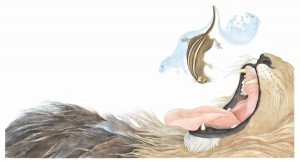 Animals have always been good to think with,and these three new picture books rework Aesop's fables in interesting ways. Below the link to my review of the books in the NYTBR.
Animals have always been good to think with,and these three new picture books rework Aesop's fables in interesting ways. Below the link to my review of the books in the NYTBR.
http://www.nytimes.com/2011/11/13/books/…
In 1484, William Caxton, the man credited with introducing the printing press to England, brought Aesop to English speakers — and we've been reading him ever since. Aesop has been a part of the nursery for so long it is hard to imagine a jailed Socrates, awaiting execution, deciding that nothing is more important than turning the Greek slave's fables into poetry. Like the stories Plato called old wives' tales, these fables have become part of the cultural bloodstream, passing wisdom from one generation to the next.
November 7, 2011
Alice Munro on Andersen's "The Little Mermaid"
Here's Alice Munro on H.C. Andersen's "The Little Mermaid." In The Annotated Hans Christian Andersen, I referred to Claire Bloom's memoir, Leaving a Doll's House. There, Bloom confesses that she gave in to the Little Mermaid complex, believing that love meant pain and suffering: "I believe that the stories my mother quite innocently passed on to me, The Snow Queen and The Little Mermaid, so innocently read to me years ago in a sunlit garden, stories of one young girl after another who had sacrificed herself at the altar of romantic love . . . had given me an extremely distorted image of sexual relationships between men and women."
Alice Munro tells a different story. She read "The Little Mermaid" and was "appalled": "She didn't have to be changed to foam on the sea." And so, Munro made up her own happy ending, because she had to "do something" about what she had found.
Even better, Munro tells us about her childhood fascination with beheadings. It reminds me of my own childhood obsession with Michael Strogoff, fueled by its horrors, in particular the practice of burying people alive.
Maria Tatar's Blog
- Maria Tatar's profile
- 316 followers



